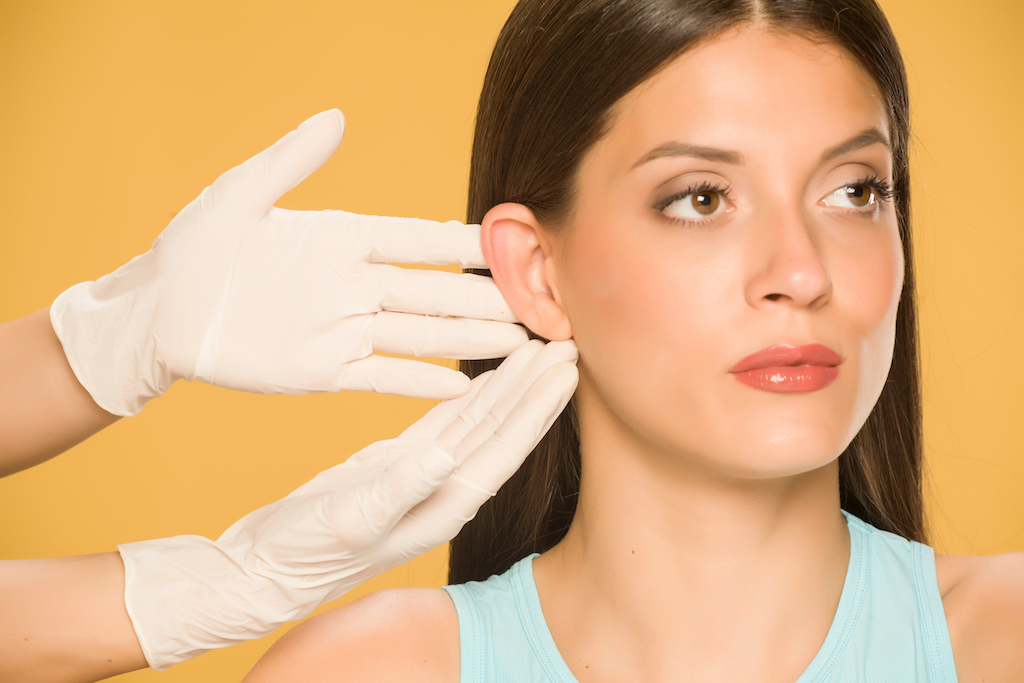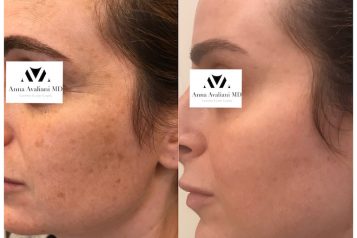Hassan Alnaeem MD FRCSC Contributed to this article.
 Photo Credit: Shutterstock
Photo Credit: Shutterstock
- What are the features of prominent ears?
Features of prominent ears include the flat unfolded outer side of the ear1, a deepened bowl at the center of the ear or prominent ear lobule2.
- How would I know if my ears need correction?
An aesthetically pleasing ear will have the outer border slightly visible in the upper third of the ear and partially hidden in a full-face view. The ear should look harmonious without any contour deformity on the profile view. These features define the attractive ear and the key goals of prominent ear surgical correction3.
- What is the appropriate age for correcting prominent ears?
Whenever the parents of a child or later in life signal any signs of teasing toward their child is a strong indication to correct prominent ears provided that the cartilage is not floppy and resilient to hold surgical techniques. Interestingly, if parents seek medical intervention within 2 weeks after the birth of the affected child; non-surgical ear molding has excellent outcomes without the need of any surgical intervention4. In later years, for instance, teenage years, patients can also be interested.
 Photo Credit: Shutterstock
Photo Credit: Shutterstock
- What is the treatment for prominent ears?
The treatment is exclusively surgical unless the ear deformity is discovered within 2 weeks after birth where non-surgical molding and splining are successful. Different surgical techniques can be used depending on the deformity and the experience of the surgeon. In general, there are two techniques to correct prominent ears. The first one is called the Mustarde suture technique where the outer fold of the ear is created by permanent sutures. The other suture technique is to provide sutures to set back the ear to reduce distance and the angle between the head and the ear. These techniques can be combined depending on the anatomical deformity of the ear. In addition to these techniques, excess cartilage at the central bowl which is called the concha can be removed to correct deep concha deformity5. Another technique involves scoring the front side of the cartilage ear to force it to bend backward; however, this technique has been associated with a higher rate of revisions6.
- Will scars after surgery be visible?
All the incisions are placed at the back surface of the ears and possible in the front inner portion of the ear which makes the scars fairly inconspicuous eventually.
- What is the after-surgery care like?
The dressing is removed the day after surgery. The ears are inspected by your surgeon. Soft gauze pads are placed over the ears and held with an elastic headband either a homemade, decorative elastic headband or a carefully selected athletic sweatband. The headband is worn day and night for 2-4 weeks then at nighttime for another 6 weeks7.
- Are there any complications?
Any surgical intervention has complications. The job of the experienced surgeon is to eliminate any complication by choosing the right candidate patient and the right surgical technique. Complications include under correction, overcorrection, contour deformities, recurrence and “telephone shaped” ear where the upper and lower third of the ear is prominent while the middle third is set back. These complications can be corrected by revision surgery with suture techniques, cartilage grafting or excision6. There is also a percentage of ‘touch up’ or revisions that patients may elect to have in time.
- Nordzell B. Open otoplasty. Plast Reconstr Surg. 2000;106(7):1466-1472.
- Furnas DW. Otoplasty for prominent ears. Clin Plast Surg. 2002;29(2):273-288, viii.
- Thorne CH, Wilkes G. Ear deformities, otoplasty, and ear reconstruction. Plast Reconstr Surg. 2012;129(4):701e-716e.
- Matsuo K, Hayashi R, Kiyono M, Hirose T, Netsu Y. Nonsurgical correction of congenital auricular deformities. Clin Plast Surg. 1990;17(2):383-395.
- Janis JE, Rohrich RJ, Gutowski KA. Otoplasty. Plast Reconstr Surg. 2005;115(4):60e-72e.
- Szychta P, Orfaniotis G, Stewart KJ. Revision otoplasty: an algorithm. Plast Reconstr Surg. 2012;130(4):907-916.
- Hoehn JG, Ashruf S. Otoplasty: sequencing the operation for improved results. Plast Reconstr Surg. 2005;115(1):5e-16e.
For more information, visit Dr. Brian A. Levine's social media:

























